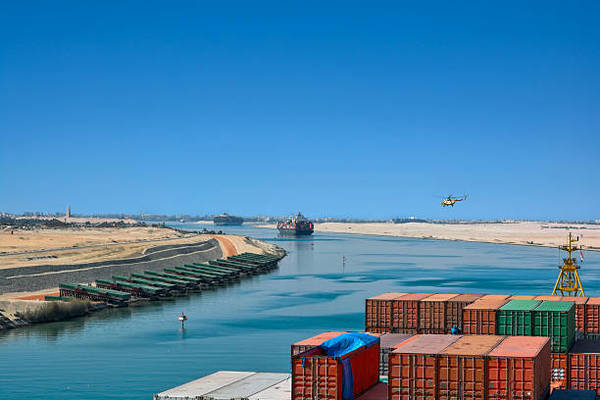Oil flows through the Red Sea drop significantly in 2024 – EIA
Crude oil and oil products transit through the Bab al-Mandab strait, the southern chokepoint at the mouth of the Red Sea, has "decreased by more than 50% in the first eight months of 2024," the US Energy Information Administration (EIA) said.
 PHOTO: Cargo vessels crossing the Suez Canal. Getty Images
PHOTO: Cargo vessels crossing the Suez Canal. Getty Images
Oil trade flows through the Bab al-Mandeb Strait averaged 4.0 million b/d in 2024 through August compared with 8.7 million b/d in full-year 2023, the US energy agency reported citing data from seaborne operations tracker and intelligence provider Vortexa.
The Bab al-Mandeb Strait is a vital maritime conduit for global trade, situated between the Horn of Africa and the Middle East. It connects the Red Sea to the Gulf of Aden and the Arabian Sea.
Iran-aligned Houthi militant group has been launching airstrikes and drone assaults on commercial vessels transiting the Red Sea, especially in the Bab al-Mandab Strait, since November last year. This has caused major deviations in maritime transit, forcing several shipping companies to opt for longer and costlier route around the Cape of Good Hope.
Meanwhile, the volume of crude oil and oil product flows around the Cape of Good Hope increased to 9.2 million b/d in the first eight months of this year, from an average of 6.0 million b/d across last year, EIA further reported.
Vital shipping chokepoints
Chokepoints are strategic passages in the global shipping routes, key to maintaining global energy security, the EIA argues. Disruptions to crude oil transit through these major chokepoints can cause significant supply delays and surges in shipping costs, ultimately driving up global oil prices.
Key routes of transporting oil and natural gas to Europe and North America encompass the Suez Canal, the SUMED pipeline and the Bab al-Mandab Strait in the Red Sea, the EIA said.
The Suez Canal and SUMED pipeline are in Egypt and connect the Red Sea with the Mediterranean Sea. The Strait of Hormuz, located between Oman and Iran, is the world’s “most important oil chokepoint because large volumes of oil flow through the strait,” the EIA said.
Last year, oil flows through the Strait of Hormuz averaged about 20.9 million b/d, “or the equivalent of about 20% of global petroleum liquids consumption,” the EIA added.
By Aparupa Mazumder
Please get in touch with comments or additional info to news@engine.online





